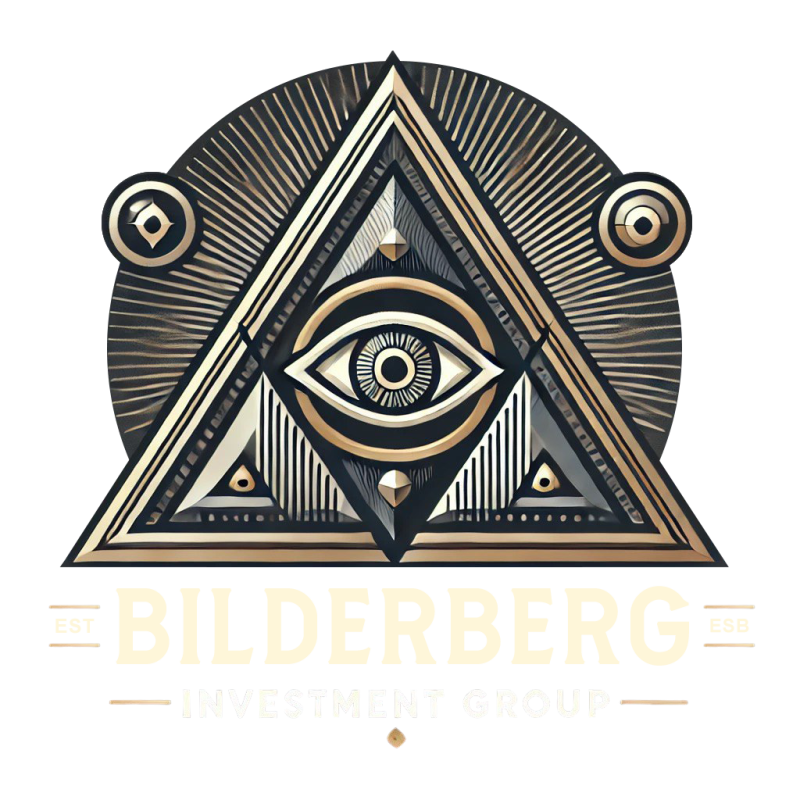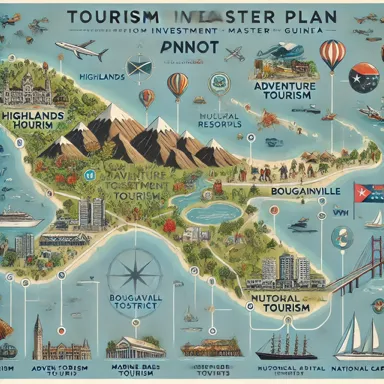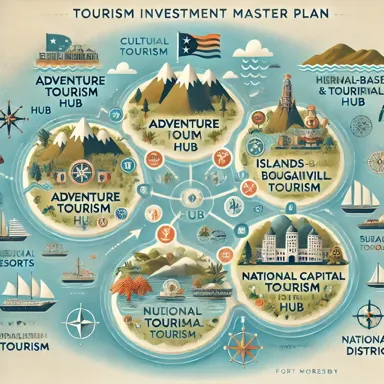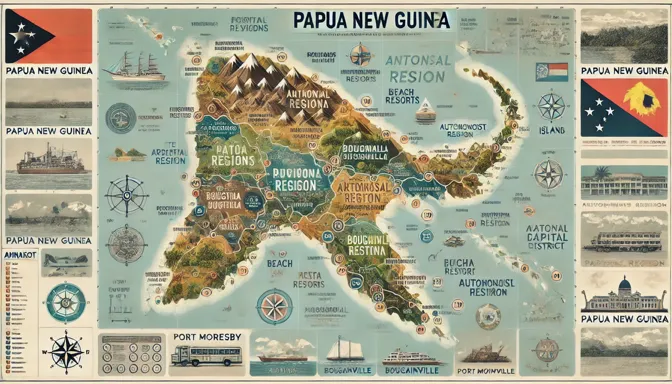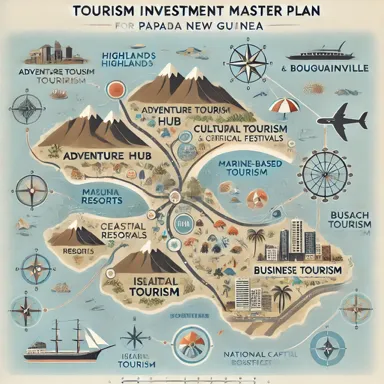Tourism Investment Master Plan Concept for Papua New Guinea (PNG)
Here is the AHNAKOT Smart Tourism Investment Master Plan Concept for Papua New Guinea (PNG) featuring the involvement of the Bilderberg Group Investment:
AHNAKOT Smart Tourism Investment Master Plan Concept for Papua New Guinea (PNG)
1. Introduction
This strategic framework aims to position Papua New Guinea (PNG) as a sustainable, competitive, and culturally vibrant tourism destination. The plan considers PNG’s administrative divisions: 20 provinces, the Autonomous Region of Bougainville, and the National Capital District (Port Moresby). Leveraging partnerships, such as Bilderberg Group Investment, this plan focuses on sustainable tourism development that promotes cultural preservation, environmental conservation, and economic growth.
2. Vision & Objectives
Vision:
Position PNG as a premier destination for eco-tourism and cultural tourism, fostering sustainable growth while protecting natural and cultural heritage.
Key Objectives:
- Economic Growth: Use tourism as a catalyst for regional development and employment.
- Cultural Preservation: Promote and safeguard PNG’s diverse cultural traditions.
- Sustainable Development: Implement eco-friendly tourism practices that protect ecosystems and biodiversity.
- Infrastructure Development: Enhance transport networks, hospitality, and tourism facilities.
- Community Engagement: Ensure local communities benefit from tourism investments.
3. Strategic Pillars of the Plan
- Regional Tourism Hubs Development
PNG is divided into four regional tourism hubs, each focusing on unique strengths:
-
- Highlands Hub (e.g., Enga, Eastern Highlands, Western Highlands)
- Focus: Adventure tourism, cultural festivals, eco-tourism, and coffee plantations.
-
- Coastal Hub (e.g., East Sepik, Madang, Morobe)
- Focus: Marine-based tourism, surfing, fishing, and diving.
-
- Islands and Bougainville Hub (e.g., New Ireland, East New Britain, Bougainville)
- Focus: Beach resorts, WWII historical tourism, snorkeling, and eco-retreats.
-
- National Capital District (Port Moresby) Hub
- Focus: Business tourism, cultural heritage museums, and national parks.
- Infrastructure & Connectivity Enhancement
- Air Transport: Expand airports and domestic airline services to improve accessibility.
- Maritime Transport: Develop ports to attract cruise tourism.
- Road Development: Build roads linking tourist attractions with provincial hubs.
- Hospitality Investment: Encourage the development of eco-lodges, boutique hotels, and resorts.
- Promotion of Key Tourism Products
- Adventure Tourism: Trekking (e.g., Kokoda Track), birdwatching, mountain climbing.
- Marine Tourism: Scuba diving and snorkeling at Kimbe Bay and Milne Bay.
- Cultural Tourism: Promote cultural festivals (e.g., Goroka Show, Hiri Moale Festival).
- Historical Tourism: WWII tours in Rabaul and Milne Bay.
- Eco-Tourism: Focus on conservation initiatives and indigenous experiences.
- Environmental and Cultural Sustainability
- Eco-Tourism Certification: Implement standards for sustainable tourism.
- Cultural Heritage Protection: Collaborate with local communities to preserve traditions.
- Biodiversity Conservation: Work with environmental partners to protect wildlife.
- Investment and Incentive Programs
- Public-Private Partnerships (PPPs): Build partnerships with private investors, including the Bilderberg Group Investment.
- Foreign Investment Incentives: Provide tax exemptions and financial incentives for tourism development.
- Local Entrepreneurship Grants: Support small businesses, such as tour guides and artisans.
- Capacity Building: Offer hospitality training to communities.
4. Institutional Framework and Governance
- Tourism Development Authority (TDA): Establish a central body to oversee tourism across all provinces.
- Provincial Tourism Boards: Each province develops tailored tourism strategies.
- Monitoring and Evaluation: Regular assessments of tourism’s economic, social, and environmental impact.
5. Marketing and Promotion Strategy
Branding PNG with AHNAKOT: Establish AHNAKOT as a national tourism brand, emphasizing eco-tourism, cultural richness, and adventure.
- Digital Marketing: Utilize social media and virtual reality tours to promote PNG internationally.
- Tourism Events: Participate in global tourism expos and fairs.
- Collaborations: Partner with airlines, cruise operators, and travel agencies to market PNG as a premier destination.
6. Action Plan and Timeline
Priority Area Actions Timeline Tourism Infrastructure Development Build roads, airports, and ports. 2025–2030 Marketing & Promotion Campaigns Launch brand and digital efforts. 2024–2026 Investment Incentive Programs Provide grants and tax relief. 2024–2028 Cultural & Environmental Initiatives Develop certifications and training programs. 2025–2030
7. Conclusion and Next Steps
The AHNAKOT Smart Tourism Investment Master Plan seeks to unlock the untapped tourism potential of PNG. By building upon the strengths of each provincial region, improving infrastructure, promoting sustainability, and engaging with communities, PNG can cultivate a vibrant tourism economy.
The next steps involve:
- Developing detailed provincial plans.
- Securing investments, with key partnerships like Bilderberg Group Investment.
- Establishing governance frameworks for smooth implementation.
With coordinated efforts between the government, local communities, and private investors, PNG’s tourism sector will deliver long-term economic, social, and environmental benefits.
This master plan sets the foundation for AHNAKOT to lead a sustainable tourism movement in Papua New Guinea, creating a prosperous future for all stakeholders.
